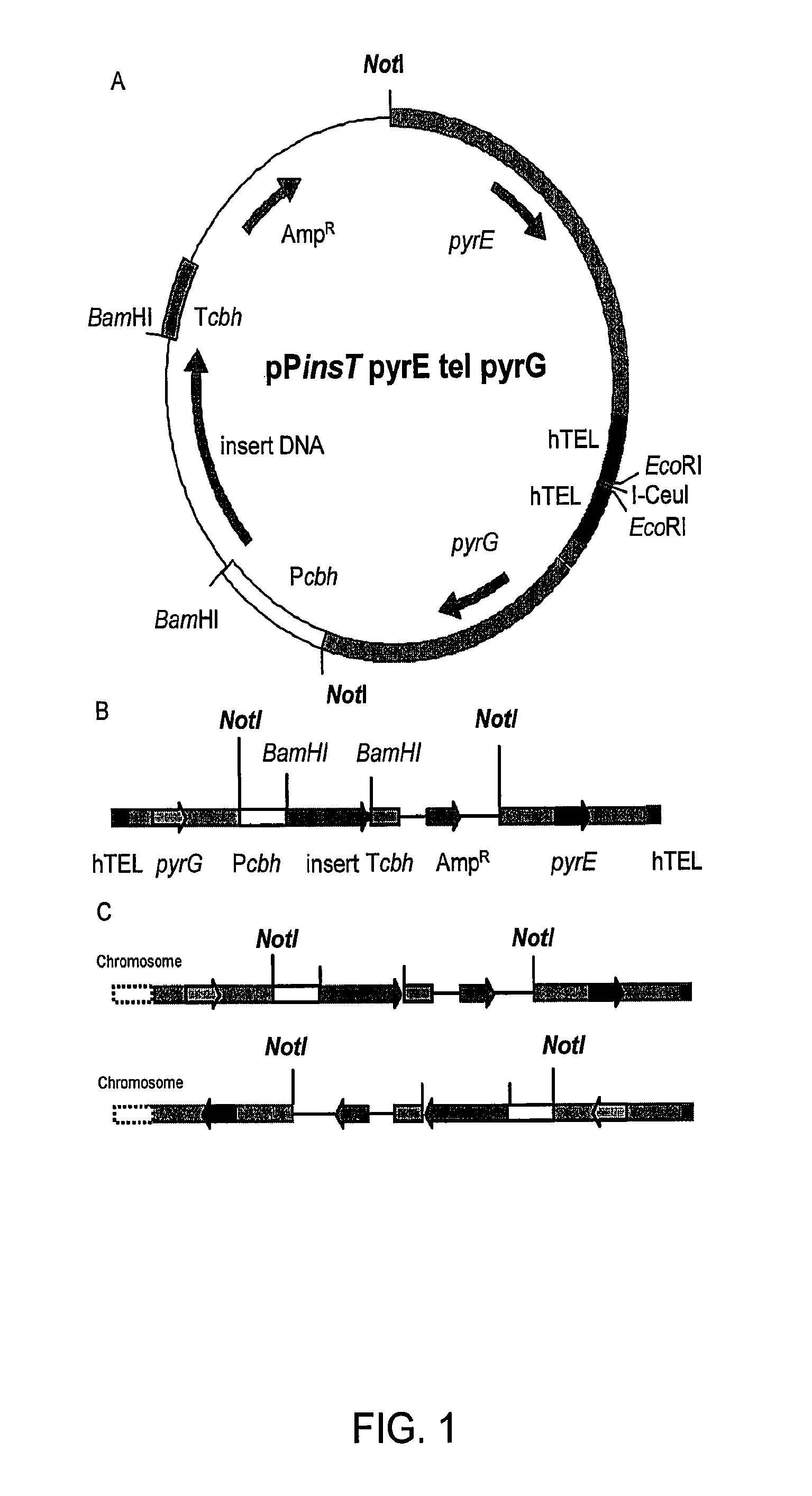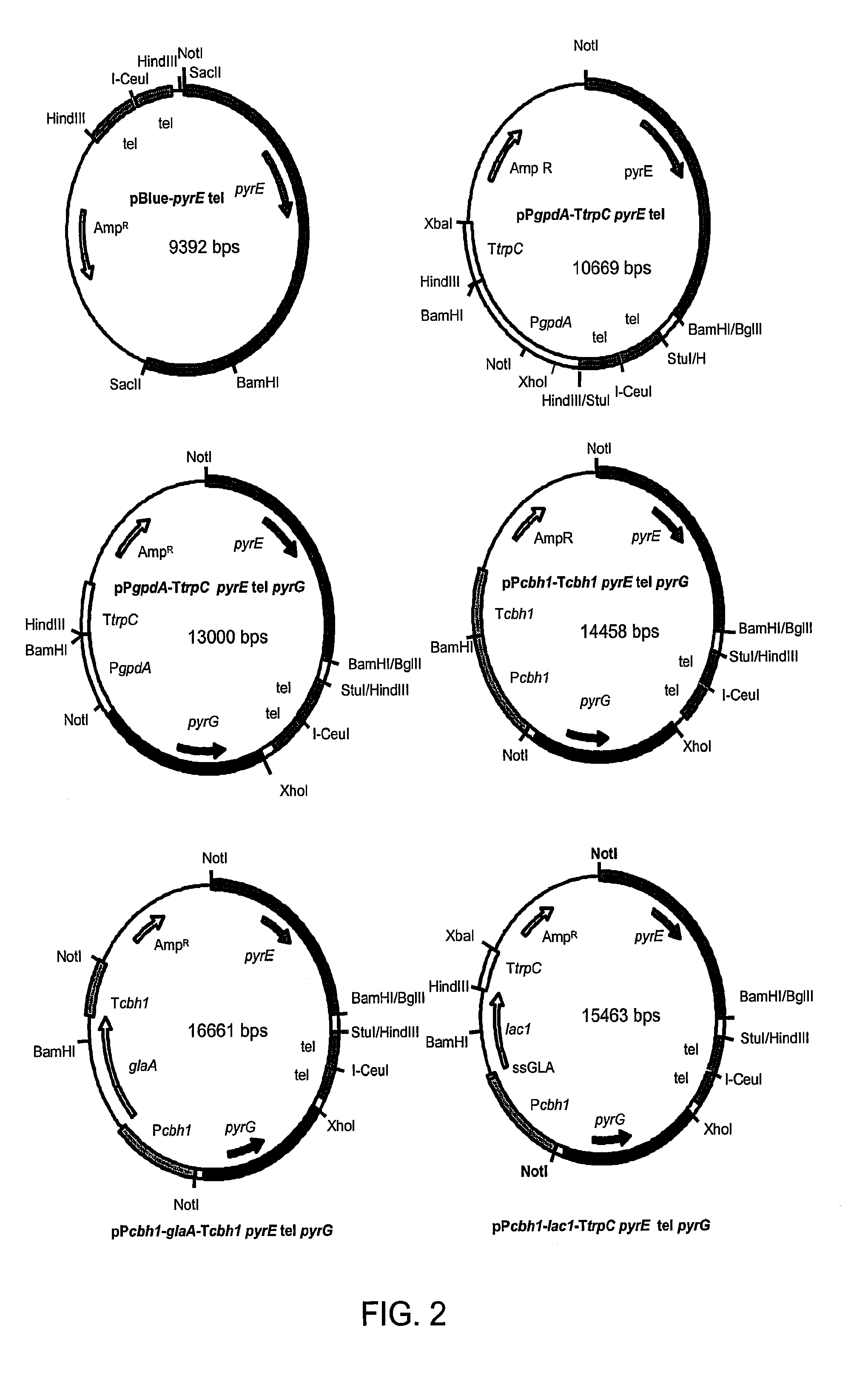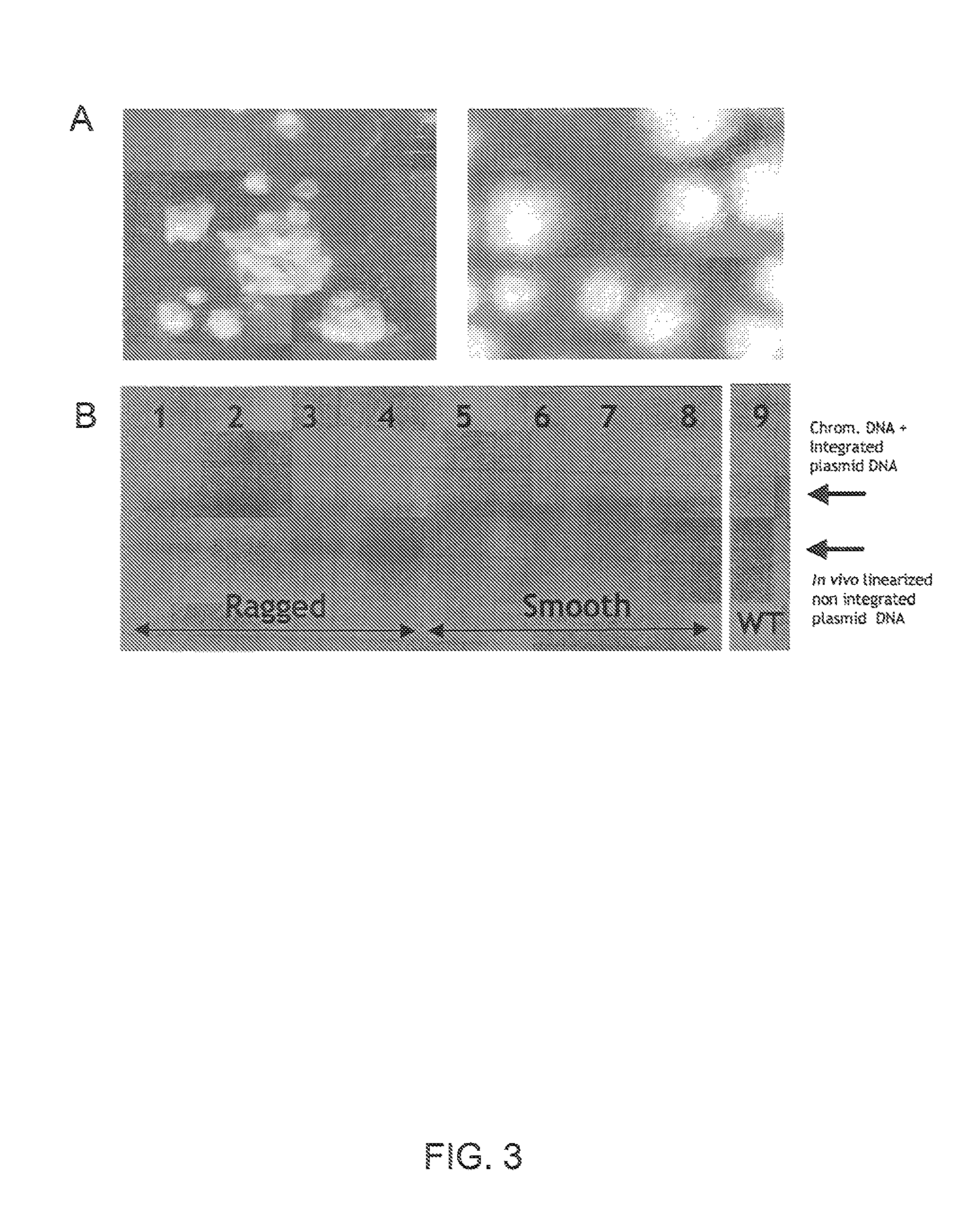Expression and high-throughput screening of complex expressed DNA libraries in filamentous fungi
a technology of complex expression and dna library, which is applied in the field of high-throughput dna library expression and subsequent screening of complex expression libraries in filamentous fungal hosts, can solve the problems of insufficient protein production, difficult and/or prohibitively time-consuming and/or costly, and protein having two or more heterogeneous or variable domains, and achieves the effect of decreasing the activity of proteas
- Summary
- Abstract
- Description
- Claims
- Application Information
AI Technical Summary
Benefits of technology
Problems solved by technology
Method used
Image
Examples
examples
[0492]Additional examples of fungal strains, library development and expression systems can be found in U.S. Pat. No. 7,122,330, which is incorporated herein by reference in its entirety.
A. Construction of Improved C. Lucknowense Host Strains
[0493]As described in U.S. Pat. No. 7,122,330, morphological variants of the original C. lucknowense strain were isolated during the course of a strain development program for neutral cellulase production. These mutants, of which the prototypical strain is designated UV18-25, are characterized by hypersecretion of protein, low viscosity in fermentation, and hyphal fragmentation. The morphology not only enables the high-level production of proteins, but also the separation of monoclonal elements, called “propagules”, from mixed populations. The formation of propagules also results in low viscosity that allows manipulation of cultures using robotic liquid handling systems.
[0494]Strain UV18-25, in addition to producing high levels of neutral cellul...
example b
REFERENCES FOR EXAMPLE B
[0523]1. Short J M, Keller M. High throughput screening for novel enzymes. U.S. Pat. No. 6,174,673 (2001).[0524]2. Dalboge H, Heldt-Hansen H P. A novel method for efficient expression cloning of fungal enzyme genes. Mol. Gen. Genet. 243, 253-260 (1994).[0525]3. Punt P J, van Zeyl C, van den Hondel CAMJJ. High throughput screening of expressed libraries in filamentous fungi. WO 01 / 79558 (2001).[0526]4. Punt P J, van den Hondel CAMJJ. Transformation of filamentous fungi based on hygromycin B and phleomycin resistance markers. Methods in Enzymology 216, 447-457 (1993).[0527]5. Stinchcomb D T, Struhl K, Davies R W. Isolation and characterization of a yeast chromosomal replicator. Nature 282, 39-43 (1979).[0528]6. Sohn J H, Choi E S, Kim C H, Agaphonov M O, Ter-Avanesyan M D, Rhee J S and Rhee S K. A novel autonomously replicating sequence (ARS) for multiple integration in the yeast Hansenula polymorphs DL-1. J. Bacteriol. 178, 4420-4428 (1996).[0529]7. Gems D, Jo...
PUM
| Property | Measurement | Unit |
|---|---|---|
| Temperature | aaaaa | aaaaa |
| Temperature | aaaaa | aaaaa |
| Temperature | aaaaa | aaaaa |
Abstract
Description
Claims
Application Information
 Login to View More
Login to View More - R&D
- Intellectual Property
- Life Sciences
- Materials
- Tech Scout
- Unparalleled Data Quality
- Higher Quality Content
- 60% Fewer Hallucinations
Browse by: Latest US Patents, China's latest patents, Technical Efficacy Thesaurus, Application Domain, Technology Topic, Popular Technical Reports.
© 2025 PatSnap. All rights reserved.Legal|Privacy policy|Modern Slavery Act Transparency Statement|Sitemap|About US| Contact US: help@patsnap.com



